PRESERVING A MILITARY LEGACY FOR FUTURE GENERATIONS
The following Reflections represents ET2 Dennis Sethe’s legacy of his military service from 1964 to 1968. If you are a Veteran, consider preserving a record of your own military service, including your memories and photographs, on Togetherweserved.com (TWS), the leading archive of living military history. The following Service Reflections is an easy-to-complete self-interview, located on your TWS Military Service Page, which enables you to remember key people and events from your military service and the impact they made on your life. Start recording your own Military Memories HERE.
Please describe who or what influenced your decision to join the Coast Guard.

What influenced me was that the CG helped people in distress and saved lives. Also, I was able in High School to learn electronics every school day for an hour at a nearby navy base. I received the highest scores there. After graduating High School, I saw a Coast Guard recruiter, and he said I would be transferred after boot camp, which I was to the Coast Guard training center at Groton, Connecticut, where I also got the highest scores. I was then transferred to Coast Guard Miami for about a week till they transferred me to the Coast Guard Cutter Ariadne for a year and a half. When the CG asked for volunteers to go to Viet Nam, I went for a year, then returned to Coast Guard Seattle, where I finished my four-year tour.
My father, Charles F Sethe, is also included briefly in my TWS notes. He was born in Mossyrock, Washington, in 1923. His father and mother had a small farm and six kids. They didn’t have much money, so my dad skipped out of school before graduating and joined the CCC (Civilian Conservation Corp) to get some money for his parents. Of the $25 a month he earned, $20 went direct to them. The CCC he went to was in the Gifford Pinchot forest, where he learned to fight fires, make campgrounds, build swinging footbridges, and make trails. You were only allowed one year in the CCC then. When he left, he joined the Navy 2 months before Pearl Harbor happened. At Oakland Naval Base, he learned to be an aircraft mechanic. Later on, specifically for PBY planes. Another man at Oakland Naval base – Don Sisson (to be my uncle), met a woman (Arlene Riewerts) in Oakland one day at an ice cream shop. They are scheduled to meet again next Saturday. She told Don to bring two more men for Saturday. As the sailors in the Oakland Naval Barracks were given sleeping racks according to names, Don brought Charles Sethe and Dale Snow.
Turns out the 3 of them eventually married the 3 Riewerts sisters. Chuck was in WWII as an aircraft mechanic on a PBY and flew on them in Alaska when PBYs were used in the Aleutians as recon planes looking for Japanese on the ground, in the air, and on ships. When the Japanese were all driven out, he was pulled back to California, put on a ship to Pearl Harbor, and put back on a PBY, which was mostly used as a taxi for military people to go from one island and another. Eventually, here turned to Oakland Naval Yard. He still rode PBYs along the Calif. Coast until he couldn’t get any more. So much flying and vibration caused problems in him. The Navy sent him to a Naval hospital in Pensacola, Florida, and after tests, he was given an honorable discharge in 1946.
Besides two uncles in the Navy in WWII and three uncles in the Forest Rangers in Washington state. Another uncle was a Marine in the Korean War, and an uncle in Viet Nam. My great-grandfather was in the Kaiser’s army as part of an escort group for the Kaiser’s son before immigrating to the USA with his wife and kids, landing in New Orleans and then going to California as a blacksmith and ironworker. He had three more sons born in California, one being my grandfather. Then they all moved to Washington for some free land.
Whether you were in the service for several years or as a career, please describe the direction or path you took. What was your reason for leaving?
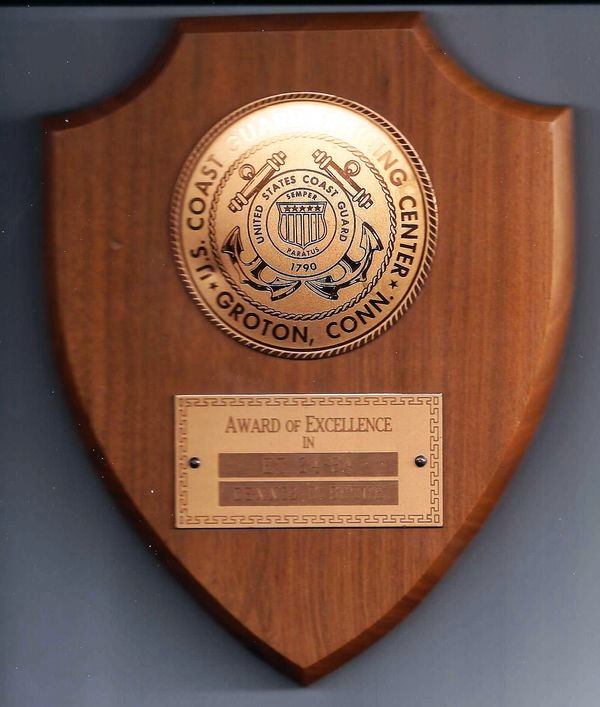
I was only in four years plus two in reserve. I left because I had gotten married and wanted to spend time with her. I spent the rest of my life in Electronics, first for a small company that had a subcontract with Todd Shipyards in south Seattle. They were building some new Navy destroyers, and our job was to install the electronics and go on sea trials with them to check the electronics. After the three destroyers were done, I went to work for Northern Radio Company in Seattle. It was because they had gotten a contract with the state of Alaska to install their new radios and 50 ft antennas in 30 Eskimo villages which had no communications from their medical personnel to hospitals in bigger towns. After preparing everything, it was put in large containers, picked up, and put on barges headed for Anchorage.
If you participated in any military operations, including combat, humanitarian and peacekeeping operations, please describe those which made a lasting impact on you and, if life-changing, in what way?
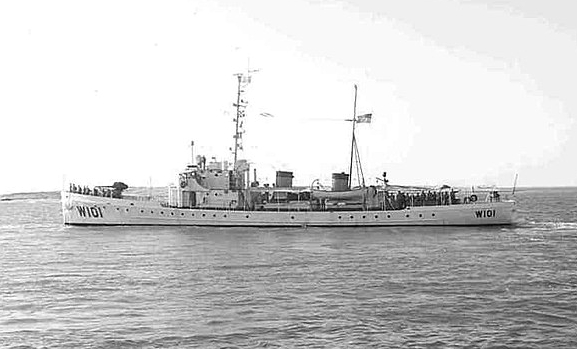
My first duty was on a ship, the Ariadne, which had been built in1934 and first boarded it in St. Petersburg, Fl. in June 1965 after attending ET school in Groton, CT. We patrolled between Key West and Cuba, picking up Cuban refugees from overcrowded small boats and homemade rafts. Typically we would find 16 to 18-foot open boats with 20 to 25 persons aboard. Sometimes we only found the boat or raft with no one aboard. Those we found we took aboard the Ariadne and sat them on our fantail. Then we would drop them off at Key Wes, Fl. and either return to patrolling or went home to our moorage in St. Petersburg, FL. We were also supposed to prevent Cubans from coming from Miami in yachts and going to Cuba to pick up friends or relatives t bring back to Miami. Since the Ariadne had a cruising speed of 11 knots and a top speed of 13 knots, and the yachts could do twice that speed, that part of our job was a flop. We once were out in part of a bad storm, and something happened to our shift, so we were instructed to head for a shipyard in Miami to go in drydock for repairs. On the way, we were rocking and rolling due to large waves and having a round bottom when we came across a man and his son in a 16′ boat that the outboard had quit. We took them aboard and towed the boat until a wave came over it, and we had to cut the rope. There was no doubt we saved their lives.
The Ariadne was a rust bucket and then some. The Captain had been instructed never to fire the 3″ gun, not knowing what would ensue. In port, the seamen used chippers to remove rust, chipping through the ship’s side, fortunately above the waterline. Repairs were made, and only light scraping could be used from then on. The ET shop was actually in the hull, below a wood grill beside my cot. We were told not to do anything but paint the hull over the rust. The electric power on board was 100 volts DC which ran the steering and other things, including a motor generator that converted the 100vdc to 110 AC. The fathometer in the wheelhouse ran off the 110AC. Going into Key West, there are some sharp turns that have to be made. My station for coming into the dock was the fathometer. One time the helmsman was instructed to do a right full rudder, and he spun the wheel, which sucked down the 110vdc used to move the rudder. As an older unit, the depth reading on the fathometer used a small CRT with a circle showing with a blip at the depth. When asked for the depth reading at that point, there wasn’t anything readable on the circle, which wasn’t even a circle then. All I could say was unreadable. There was no air conditioning aboard, only a fan blowing warm air out of ducts. For showers, we had to take sea showers using salt water and then, in the end, a brief wash-off with fresh water. After about a year and a half, I volunteered to go to Viet Nam. I went to SERE training at Camp Pendleton then a commercial plane flew a lot of us from different service branches to Saigon, stopping briefly in Hawaii to refuel. We were supposed to be birthed in a hotel there, but it had just been hit by by a bomb from a motorcycle, so we wound up separated and staying in several native rooms like you saw in the Apocalypse Now movie.
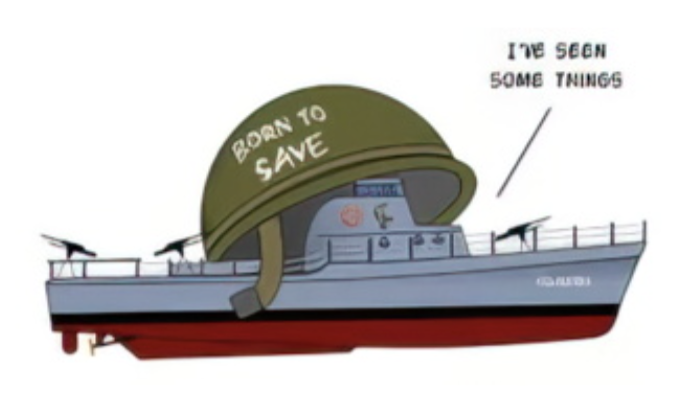
The following day everyone was sent in different directions. I was put on a plane to Danang. I was stationed on the 82-foot Point Caution, the first 82-footer built) based out of Danang with six other boats. We patrolled in alternate zones on the coast from the DMZ down to about 70 miles south of Danang. Two months before I arrived, one of our boats, the Point Welcome, was strafed repeatedly at night by Navy and Marine attack planes, killing some of the crew and wounding the others. The Point Caution was the first boat on the scene to help the crew and assist with getting the Point Welcome back to Danang. After that, white stars were painted on top of the wheelhouse, a signal light was on board with new codes to flash, and better communications were supplied. The pilots who did the strafing were never notified that CG patrol boats were there. We usually had a Vietnamese liaison officer on board as we checked all Vietnamese fishing boats for guns, etc., and everyone’s ID papers, arresting those who were without or phony. We also stopped and searched any freight trawlers. Another job was to provide fire support when the small single-engine recon planes spotted any VC near shore. The Ait Force recons were called Bird Dogs; the Army recons were called cat killers. We had 4 50 cal machine guns mounted on the rear of our boats and a combination 81 mm mortar with a piggyback 50 cal machine gun mounted on the bow.
The recon planes would instruct us to swing our shooting right or left and up or down as only they could see where the shots were landing; the mortar shots were easy for them to see, and the 50 cal shots had tracers to see. At night we could see lots of flares. The planes with mini-guns firing down created an arc-shaped light due to their tracers. Daytime, we could see the B52 vapor trails. We were also instructed twice to look for downed pilots in the water but only found debris. One time we were in one of the southern patrol zones and were instructed to go to a position and assist in keeping any fishing boats out of there. Several Navy ships showed up, including rocket-firing ships and an LST, which launched several LCM. s with troops aboard. The LCMs circled in two groups as planes came in and dropped bombs, started, and dropped napalm bombs (worst thing I ever saw). The plan was to get a large VC group from the beach and back on the hills above. One time we picked up Martha Ray from a navy ship and took her to another 82-footer, where she continued her journey to somewhere.
Did you encounter any situation during your military service when you believed there was a possibility you might not survive? If so, please describe what happened and what was the outcome.
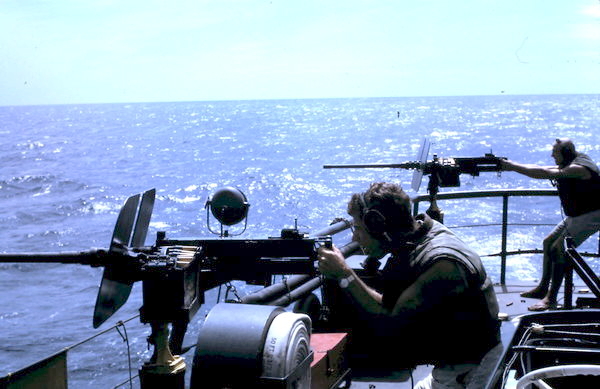
When I was in Viet Nam on the 82′ patrol boat Point Caution patrolling off the coast, we were in typhoons, sometimes with 25 ‘ or more waves. Even Navy destroyers and cruisers were making radio calls to come in. It was a little scary the first time, but that patrol boat with two 6oohp engines did a great job as long as the helmsman knew what he was doing after going through it once. The next times were no sweat.
Of all your duty stations or assignments, which one do you have fondest memories of and why? Which was your least favorite?
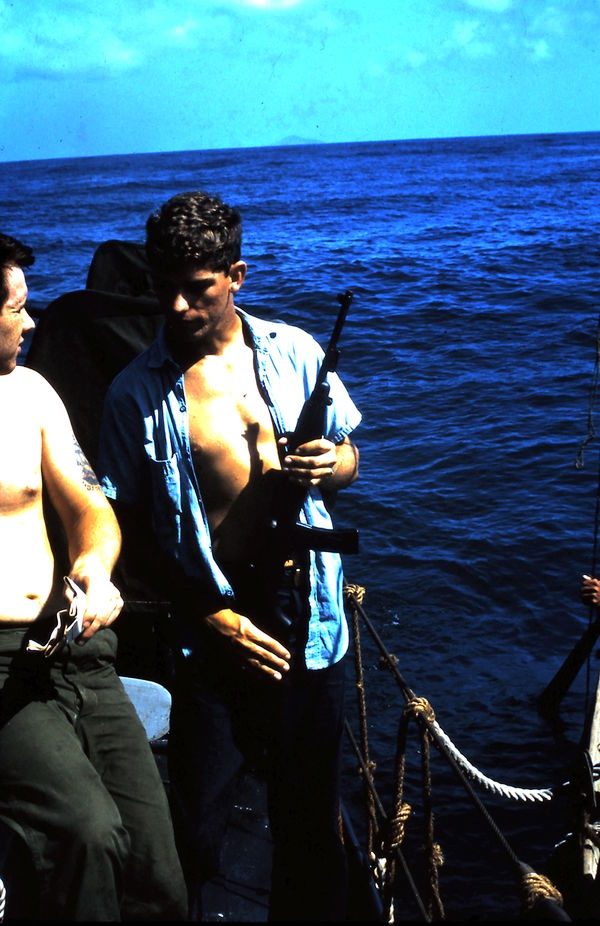
I wouldn’t say fondest, but my strongest memories, of course, were in Viet Nam due to the war going on and providing fire support at times. Also, just a different life there, seeing flares, bombs, napalm bombs, Gunships (airplanes) called Puff the magic dragon firing mini-guns, etc. We could never hear the mini-guns, but they had tracer rounds we could see. At night you would see a curved light come down from the sky, every 5th round being a tracer. The mini-guns could fire 50 or 100 rounds per second.
From your entire military service, describe any memories you still reflect on to this day.
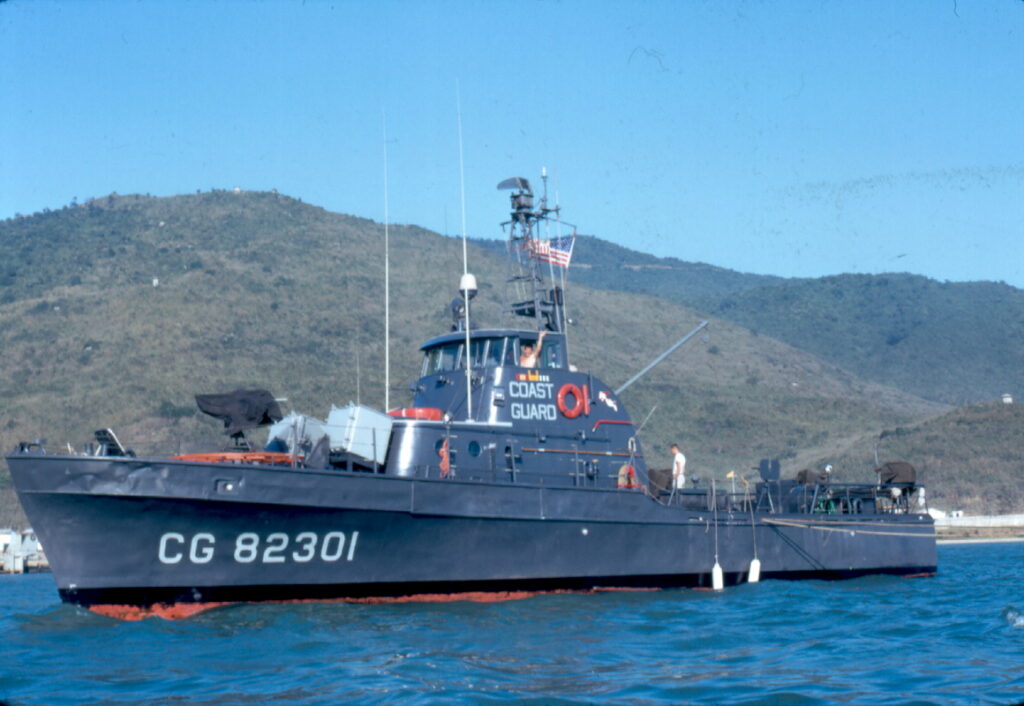
On both vessels, it was the men I served with; they all did their jobs and pretty much got along well with each other, with few exceptions. In Vietnam, we had to get along.
After a patrol in Viet Nam, I was told to see an officer on the barge our boats tied up to when in port. I was told they had gotten word that someone in my family had died, but they didn’t know who and did I want to return for the funeral. Since I had not taken any leave yet as most others had, I said yes. I was put on an empty C-141 freight plane headed for McCord AFB near my parent’s home in Tacoma, WA, where I went to high school. I took a cab, and no one was there. A neighbor saw me and explained my younger sister had died the morning after giving birth to her second daughter, and my parents were on the way back from San Diego, where she was staying at the navy housing; my brother-in-law was on tour on a tug boat there. They all arrived in Tacoma the next day. We had a funeral, and then I caught a return ride to Danang on a loaded C-141 and finished my 1-year tour there. I always thought it strange that I was OK in Vietnam, but my younger sister died in San Diego. Life is strange.
What professional achievements are you most proud of from your military career?
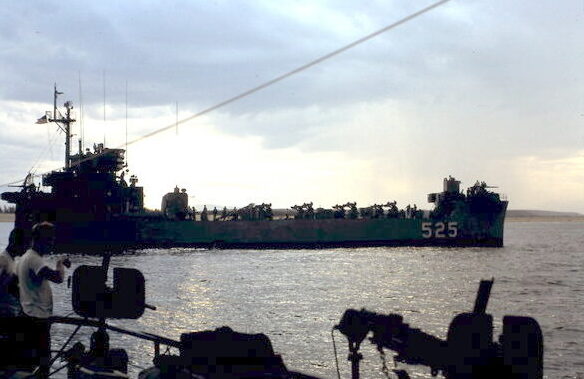
We were all credited with 99 enemy bunkers and other emplacements destroyed or damaged, probably mostly from the rocket ship, the Saint Francis River. Another operation we were in was mostly to keep all fishing junks and other boats out of an area where, later, an LST, two rocket ships, and a bunch of LCMs loaded with soldiers came and made two circles (like a John Wayne movie) and on a signal went to the beach. Meanwhile, planes were bombing & strafing the beach beforehand and the hill behind the beach. Napalm bombs were dropped on the hill, which looked like rolling jello on fire, Bad stuff.
Of all the medals, awards, formal presentations and qualification badges you received, or other memorabilia, which one is the most meaningful to you and why?

I received four ribbons from combat in Viet Nam and 1 Good Conduct ribbon. One commendation for duty on the CGC Ariadne during the Cuban refugee time and some commendations from Vietnam experiences. One of the Viet Nam commendations was for participating in a battle about 70 miles south of Danang along with a rocket ship and a Navy swift boat after a friendly aircraft received fire from a shore VC battalion.
Which individual(s) from your time in the military stand out as having the most positive impact on you and why?
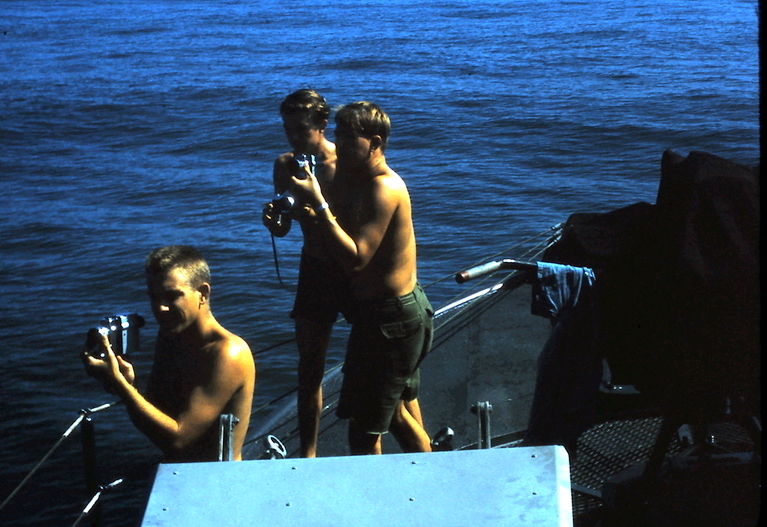
The XO on the Ariadne, who later became the Captain before I left, was a good person and officer.
All the men on the Point Caution were good, some better than others, but they all did their jobs, and that’s what counted.
List the names of old friends you served with, at which locations, and recount what you remember most about them. Indicate those you are already in touch with and those you would like to make contact with.
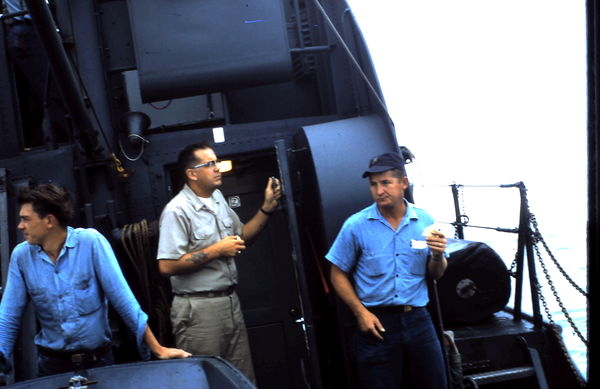
Sorry but at 72, my memory is going. I remember Duane Strebe, another ET on the Ariadne. He went to Vietnam before I did. The top ET on the Ariadne was funny and a good guy, but I can’t remember his name. I remember Lars Ostervold on the Point Caution. Lt. Black was the skipper on the Point Caution.
Can you recount a particular incident from your service which may or may not have been funny at the time but still makes you laugh?
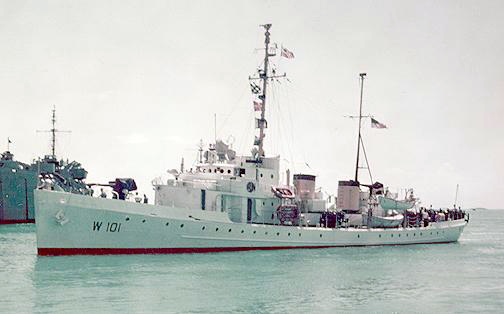
On the Ariadne, there was a magnetic steering compass by the helm that the helmsman used. Once in a while, some joker would come by, put his hand on the flat top of the compass, and swoose it round and round so when he let go, the reading would wander around for a while. One time right after that happened, the Captain came into the wheelhouse and saw the compass wandering around and asked what happened. Of course, nobody knew! Immediately the Captain thought it had something to do with the Bermuda Triangle. We spent the next hour hunting for that spot in the ocean again.
When I reported aboard the Ariadne, it was lunchtime, and I went down the stairway from the fantail to the galley. The cook, whose last name was Riley, was known as Mother Riley and cooked on a big large flat griddle. As he cooked, the sweat ran off his face and arms continuously onto the griddle and whatever was cooking. When I got some food and something like Kool-Aid and sat down to eat, the guy next to me was eating, and a fork full of something he picked up had a live cockroach in it. He just picks it off and continues eating. Well, I found out the Ariadne was full of cockroaches, and nobody paid any mind until the Captain got one in his soup one day. Then an exterminator was called in while in port and sprayed the whole ship. We left port the next day and no cockroaches. When we came back after our patrol a few days later, the roaches came back. Come to find out, every morning in port, donuts would get delivered to the vessel, and the roaches were with the donuts. I also had my first intro to grits the first morning I went to the galley. Thinking it was white mush, I took a bowl full, but when I ate it, it tasted like sand mixed with oil. Being from the Northwest (Washington State), I didn’t know about grits or roaches.
Once on patrol, a new ensign was the officer of the deck in a rough sea at lunchtime, and not knowing any better, he made a 180 turn. All the food, pots, pans, kool-aid, grits, etc. went flying onto the floor. Everyone in the galley came roaring up the steps. Chief Bosun sent a seaman down to clean up the mess. Meanwhile, the round bottom Ariadne is still rolling in the trough. Looking down the steps from the fantail, you could see the seaman with a mop from his hands going straight down, and every time the ship rolled side to side, he and the mop and everything else would move side to side also.
One other time on patrol in the Ariadne, the vessel was stopped in calm water, and a fish call was made. Some persons had fishing poles and some just lines. After a bit, a crewman on the port side of the fantail says, “I got something,” as his pole tip goes down. The crewman on the starboard side of the fantail says, “I got something too.” After a few more repetitions, it’s obvious their lines are tangled, and everyone gets a good laugh.
What profession did you follow after your military service, and what are you doing now? If you are currently serving, what is your present occupational specialty?
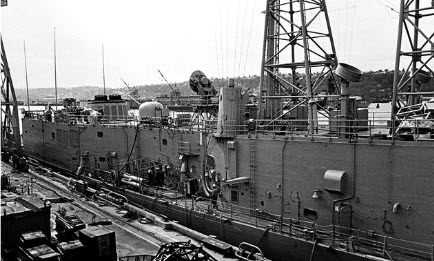
After leaving the CG, I stayed with marine electronics for 40 years, working for different companies and co-owing a company. We sold, installed, and repaired radios, radars, fathometers, Loran C’s and later GPS when it came along, sonars, etc.
When I finished my tour in the CG, I first hired on to a company that subcontracted to Todd Shipyards in Seattle, who were building new Navy destroyers (DE-1052 and up). When that contract finished, I went to work for Northern Radio Company in Seattle. They made radios from older AM communication sets to later single sideband sets mostly for fishing boats, crab boats that went to Alaska, and fish canneries along the Aleutian chain. When I was hired, they got a contract from the State of Alaska to make and install radios and antenna towers in some of the Indian villages. Another fellow and I did almost 30 of the villages but had to stop when the ground got too frozen to dig for the antenna bases, Our power auger would just shine the ground like a mirror. The following year there was another contract, and I went up with another fellow to do them and what was left to do from the previous year. I also worked as a tech on the canary on the Aleutian chain and back in Seattle on fish boats, tugs, U of W research vessels, and yachts. In 1975 a salesman and I bought the retail side of Northern Radio and ran it for 19 years. We sold out, and I went to work for JRC, Japan Radio Company, which opened up a place in West Seattle since Raytheon no longer wanted their equipment. I was a service manager there for 5 years and also trained techs on equipment at dealers around the United States. I left there and went to work for Simrad in Lynwood, WA, for six years and then retired in 2008. At the end of 2017, I was diagnosed with leukemia and, in May 2018, had a double heart bypass. I also have a fully clogged Carotid artery on the right side and a 40% clogged left artery, so I probably won’t be around too much longer.
In what ways has serving in the military influenced the way you have approached your life and your career? What do you miss most about your time in the service?
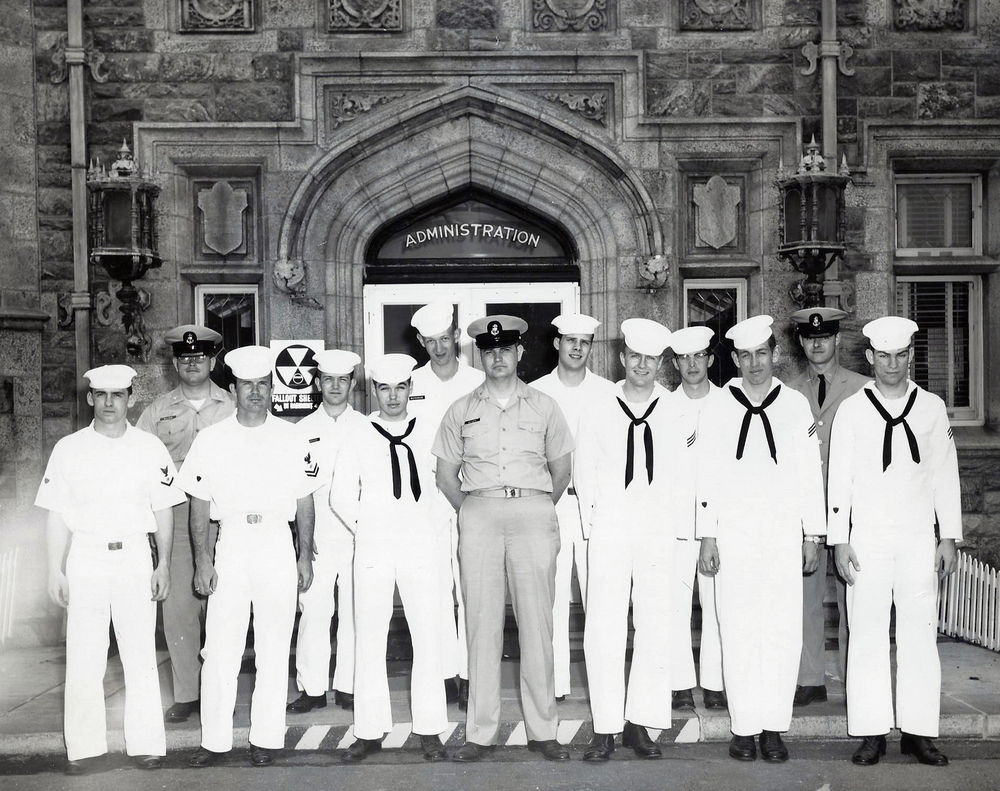
I actually started electronics in High School and stayed with it all my life in different aspects. It is amazing now to look back at how marine electronics have evolved. On the CGC Ariadne, we only had CW for communications. Our navigation was by Loran A, which was not too reliable. Now communications happen over satellite. And navigation by GPS within a few feet. Things have sure changed.
Based on your own experiences, what advice would you give to those who have recently joined the Coast Guard?
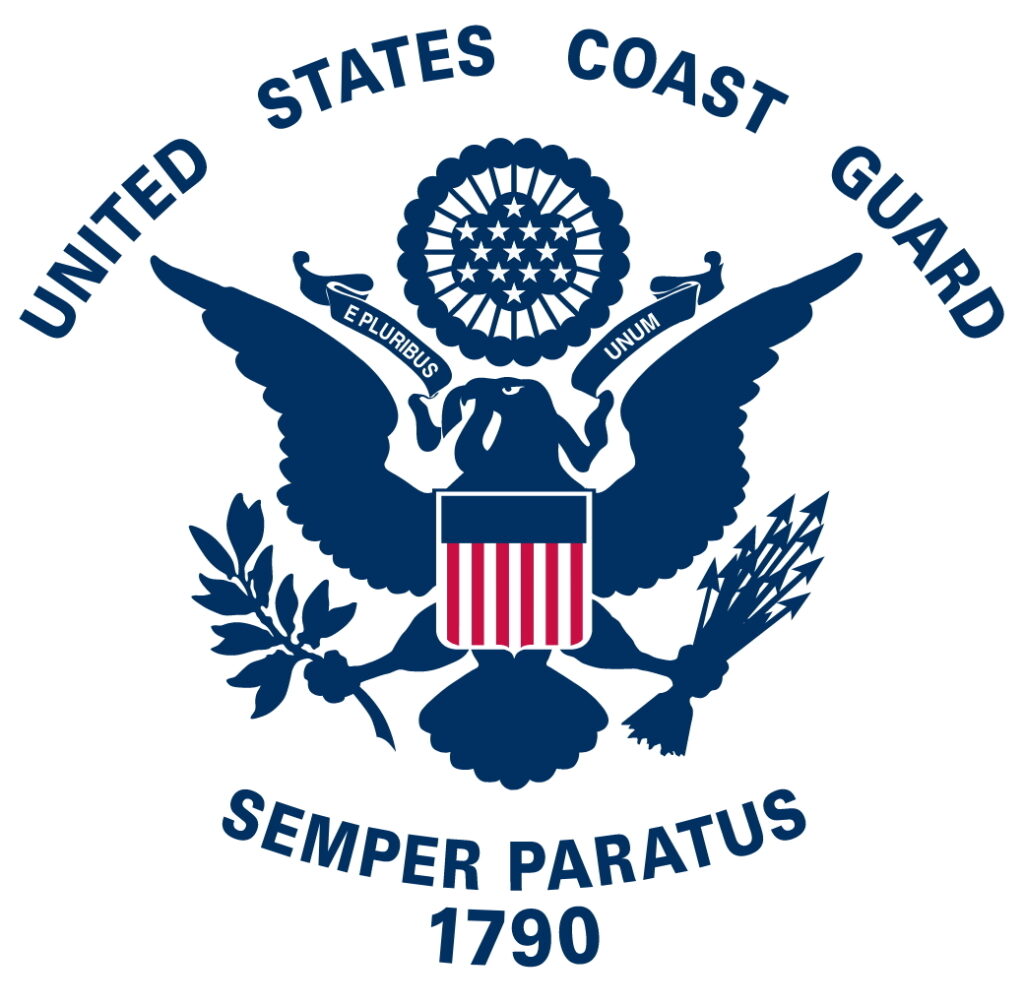
Just do your job and get along with others as best you can.
In what ways has togetherweserved.com helped you remember your military service and the friends you served with?
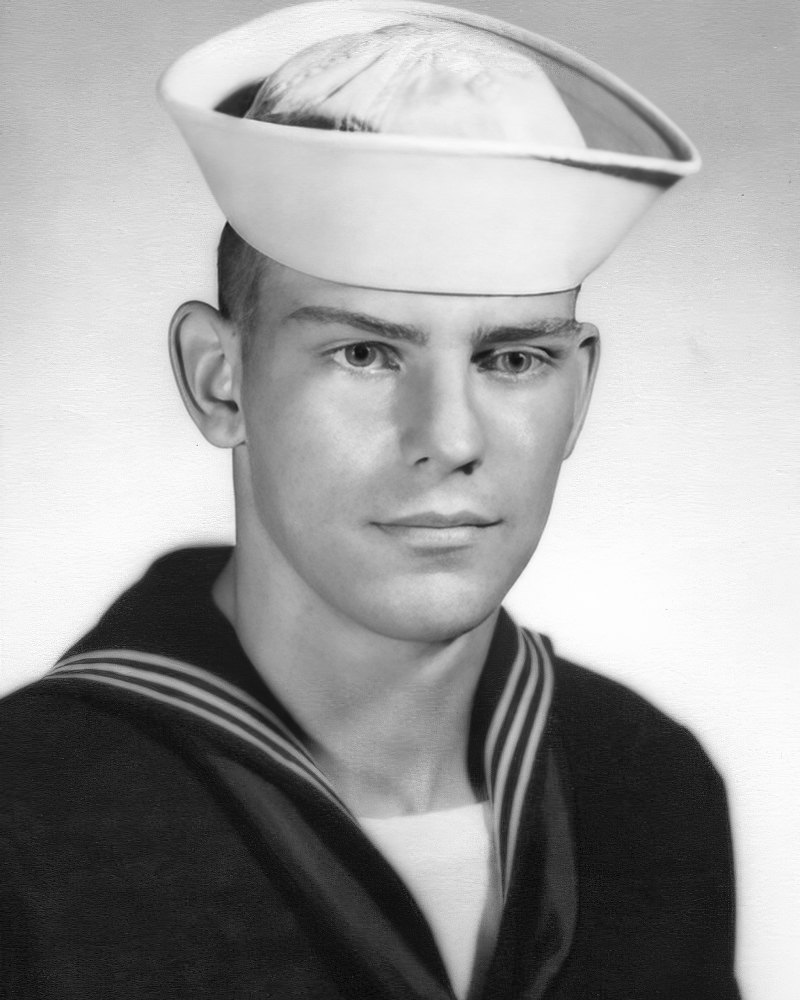
TWS has afforded me these questions that have helped me remember those moments in my Coast Guard Career.
PRESERVE YOUR OWN SERVICE MEMORIES!
Boot Camp, Units, Combat Operations
Join Togetherweserved.com to Create a Legacy of Your Service
U.S. Marine Corps, U.S. Navy, U.S. Air Force, U.S. Army, U.S. Coast Guard

0 Comments